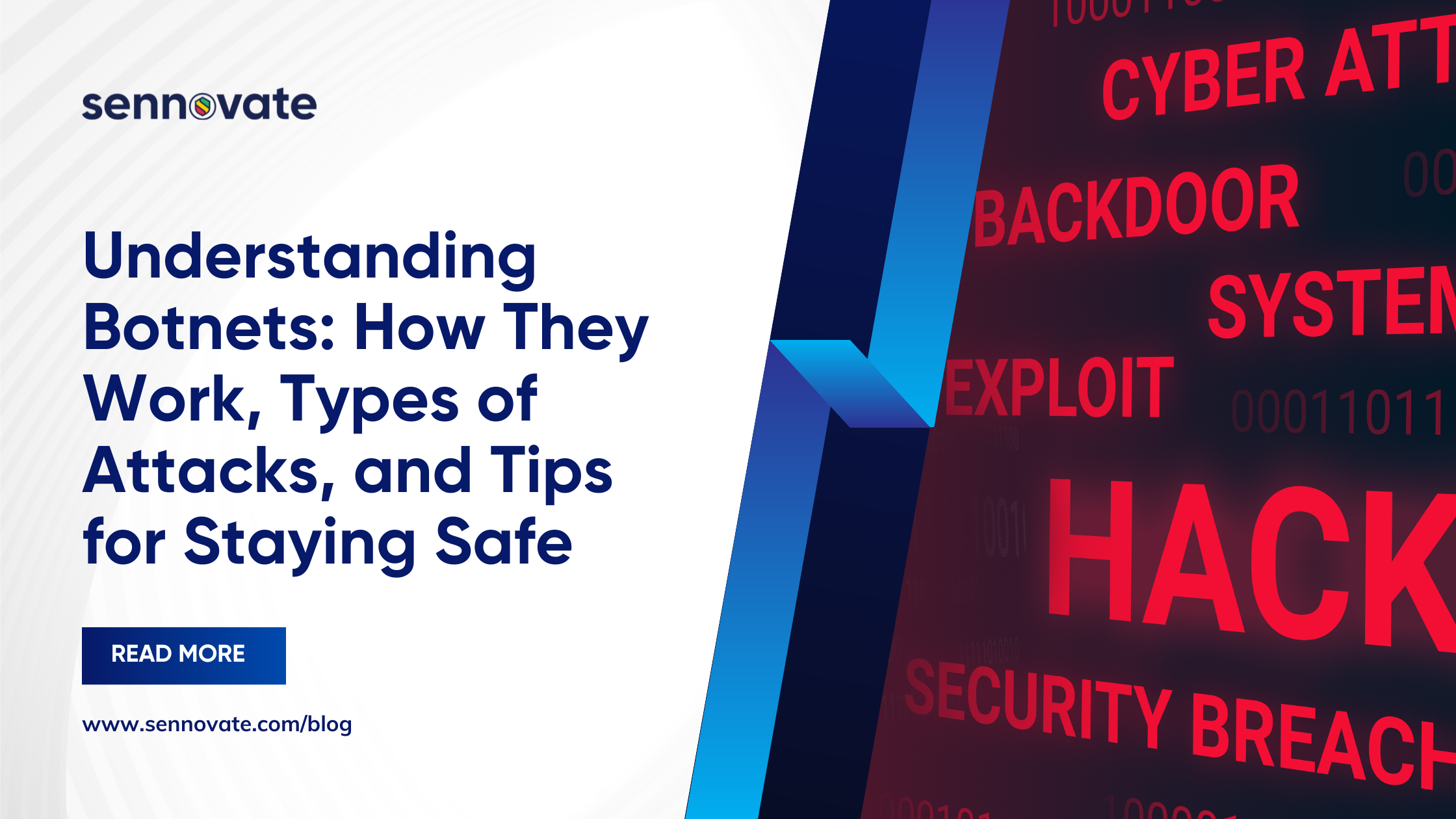
Understanding Botnets: How They Work, Types of Attacks, and Tips for Staying Safe
Imagine a vast army, not of flesh and blood, but of computers and devices. These silent soldiers, infected with malicious code, march to the beat of a cybercriminal’s drum, carrying out their nefarious bidding. This is the chilling reality of a botnet, a network of compromised devices that act as a unified force in the dark corners of the internet.
Botnets, short for “robot networks,” are a pervasive threat in the realm of cybersecurity. These malicious networks of compromised computers, or “bots,” operate under the control of a single entity, often a cybercriminal or hacker. In this blog post, we’ll delve into what botnets are, how they work, the types of attacks they employ, and crucial tips for safeguarding your systems.
What is a Botnet?
A botnet is a network of computers infected with malicious software, known as “bots” or “zombies.” These infected machines unknowingly become part of a larger network that can be controlled remotely by a threat actor. The primary purpose of a botnet is to carry out various cyber attacks, ranging from distributed denial of service (DDoS) attacks to spreading malware and stealing sensitive information.
How Botnets Work:
- Infection:
- Propagation: Botnets typically begin by infecting a single computer through malware, often delivered via phishing emails, malicious websites, or software vulnerabilities.
- Propagation Methods: Once on a system, the malware can replicate itself and spread to other vulnerable computers, creating a network of compromised machines.
- Command and Control (C&C):
- Centralized Control: The attacker manages the botnet through a central server or a series of servers known as the Command and Control infrastructure.
- Communication: Bots within the network communicate with the C&C server(s) to receive commands, updates, and instructions.
- Execution of Attacks:
- Distributed Denial of Service (DDoS): Botnets are commonly used to overwhelm websites or online services with a flood of traffic, rendering them inaccessible to legitimate users.
- Spreading Malware: Botnets can be used to propagate and distribute malware, including ransomware and spyware, across the network.
Types of Botnet Attacks:
- DDoS Attacks:
- Volume-Based Attacks: Overwhelm a target by flooding it with a massive volume of traffic.
- Application Layer Attacks: Exploit vulnerabilities in web applications, aiming to exhaust server resources.
- Spam and Phishing Campaigns:
- Email Spam: Use botnets to send large volumes of spam emails, often containing malicious links or attachments.
- Phishing: Conduct phishing attacks to trick users into revealing sensitive information.
- Credential Stuffing:
- Automated Login Attempts: Use botnets to automate large-scale login attempts, exploiting weak or reused passwords.
- Cryptojacking:
- Unauthorized Cryptocurrency Mining: Harness the computational power of infected machines to mine cryptocurrencies without the owner’s knowledge.
How to Stay Safe from Botnets:
- Keep Software Updated:
- Regularly update your operating system, antivirus software, and applications to patch vulnerabilities.
- Use Strong Authentication:
- Implement strong, unique passwords and consider using multi-factor authentication to enhance security.
- Educate Yourself About Phishing:
- Be cautious of unsolicited emails, messages, or links, and verify the legitimacy of communication before clicking.
- Install Reliable Antivirus Software:
- Utilize reputable antivirus or anti-malware software to detect and remove potential threats.
- Monitor Network Traffic:
- Regularly monitor your network for unusual or suspicious activities that might indicate a botnet infection.
Conclusion
Understanding the workings of botnets is essential in fortifying your cybersecurity defenses. By staying informed about the types of attacks, recognizing potential threats, and implementing proactive security measures, you can significantly reduce the risk of falling victim to these insidious networks. Stay vigilant, update your defenses, and contribute to a safer online environment for yourself and others.
